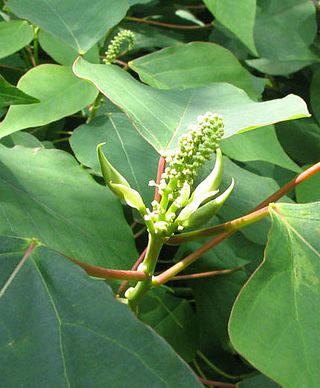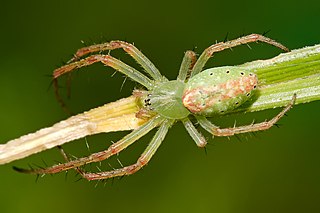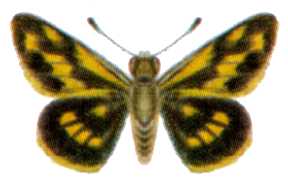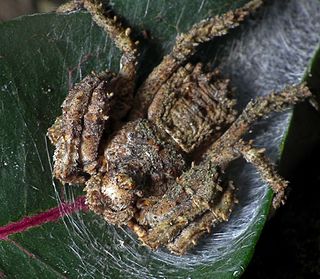
UTC+10:00 is an identifier for a time offset from UTC of +10:00. This time is used in:

UTC+09:00 is an identifier for a time offset from UTC of +09:00.

Homalanthus is a genus of plants in the family Euphorbiaceae, first described in 1824. It is the only genus in the subtribe Carumbiinae. It is native to mainland Southeast Asia, Malesia, Papuasia, northern and eastern Australia, and various islands in the Pacific.

The states and territories are the second level of government of Australia. The states are partially sovereign, administrative divisions that are self-governing polities, having ceded some sovereign rights to the federal government. They have their own constitutions, legislatures, executive governments, judiciaries and law enforcement agencies that administer and deliver public policies and programs. Territories can be autonomous and administer local policies and programs much like the states in practice, but are still legally subordinate to the federal government.

Cyrtophora, the tent-web spiders, is a genus of orb-weaver spiders first described by Eugène Simon in 1895. Although they are in the "orb weaver" family, they do not build orb webs. Their tent-like, highly complex non-sticky web is sometimes considered a precursor of the simplified orb web. These webs are aligned horizontally, with a network of supporting threads above them. These spiders often live in colonies. Females have a body length of mostly about 10 millimetres (0.39 in) long. Some members, including Cyrtophora cicatrosa, exhibit the ability to change colour rapidly.

The white-bellied cuckooshrike is a species of bird in the family Campephagidae. It is found in Australia, the Moluccas, New Guinea and the Solomon Islands.

The Australasian darter or Australian darter is a species of bird in the darter family, Anhingidae. It is found in Australia, Indonesia, and Papua New Guinea. It weighs around 2.6 kg and spans 86–94 cm (34–37 in) in length.

Dipodium, commonly known as hyacinth orchids, is a genus of about forty species of orchids native to tropical, subtropical and temperate regions of south-east Asia, New Guinea, the Pacific Islands and Australia. It includes both terrestrial and climbing species, some with leaves and some leafless, but all with large, often colourful flowers on tall flowering stems. It is the only genus of its alliance, Dipodium.

New Guinea is the world's second-largest island, with an area of 785,753 km2 (303,381 sq mi). Located in Melanesia in the southwestern Pacific Ocean, the island is separated from Australia by the 150-kilometre wide Torres Strait, though both landmasses lie on the same continental shelf, and were united during episodes of low sea level in the Pleistocene glaciations as the combined landmass of Sahul. Numerous smaller islands are located to the west and east. The island's name was given by Spanish explorer Yñigo Ortiz de Retez during his maritime expedition of 1545 due to the resemblance of the indigenous peoples of the island to those in the African region of Guinea.

Suniana is a genus of butterflies in the family Hesperiidae, the skippers. It is composed of three species, all native to the Australian faunal region, Australia and several surrounding island nations.

Ocybadistes flavovittatus, the common dart or narrow-brand grass-dart, is a butterfly of the family Hesperiidae. It is found in Indonesia, Australia and Papua New Guinea.

Parnara amalia, the hyaline swift or orange swift, is a species of butterfly in the family Hesperiidae, the skippers. It occurs in Irian Jaya and Papua New Guinea, as well as the Australian states of New South Wales, the Northern Territory, and Queensland.

Suniana lascivia, the dingy grass-dart or dingy dart, is a butterfly of the family Hesperiidae. It is found in Australia, Papua New Guinea and Indonesia.

Taractrocera dolon, the sandy grass-dart, is a butterfly of the family Hesperiidae. It is found in Australia in the Northern Territory, Queensland and New South Wales as well as Papua New Guinea.

Telicota augias, the bright-orange darter, is a butterfly of the family Hesperiidae. It is found in Australia, Papua New Guinea, Myanmar, Indonesia and the Philippines.

Cephrenes trichopepla, the yellow palm dart, is a butterfly of the family Hesperiidae. It is found in Australia, Papua and Papua New Guinea. It has recently been recorded from Singapore and Sri Lanka.

Stephanopis is a genus of crab spiders first described by Octavius Pickard-Cambridge in 1869. It was erected for five then newly described species, including S. altifrons, from Australia. Stephanopis was characterized by the high cephalic region with unequally sized anterior eyes disposed in a strongly recurved row, opisthosoma ending in several spiniform projections and dorsoventrally depressed habitus. According to Pickard-Cambridge, the single specimen used for the description of S. altifrons was dry-pinned. Therefore the specimen could not be properly examined, so it was not possible to determine if the specimen was adult. Moreover, he states his own sketch of the spider as “hasty” or "dull". This may explain why the somatic characters were inadequately described, genitalic features were not mentioned at all, and the illustrations were not detailed enough, making the species unidentifiable.


















